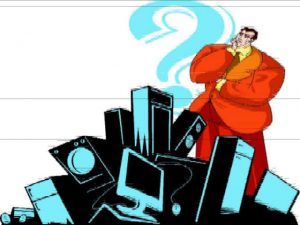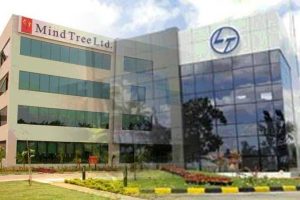Mergers & Acquisitions are part of strategic management of any business. It involves consolidation of two businesses for increasing market share, competitive advantage, and profits and to an aim to become leader in the industry. Mergers and Acquisitions are complex processes which require preparing, analysis and deliberation.
It’s been observed that the mismatch of work culture leads to dissuade working environment, which in turn ensure the downturn of the organization. Flawed intentions often become the main reason behind the failure of mergers and acquisitions. Companies often go for mergers and acquisitions getting influenced by the booming stock market.
A merger is a corporate strategy of combining different companies into a single company in order to enhance the financial and operational strengths of both organizations; merger creates a new brand. In case of an acquisition, it occurs when one company buys most or all of another company’s shares. If a firm buys more than 50% of a target company’s shares, then it effectively gains control of that company. An acquisition refers to the takeover of one entity by another. It has been observed that an acquisition is often friendly and a takeover can be hostile. A takeover is a particular form of acquisition that occurs when a company takes control of another company without the acquired firm’s agreement.
There are different types of mergers:
A Horizontal merger happens when two companies exist in the same industry come together to increase their reach. Typically, this type of merger is done between direct competitors. The goal of a horizontal merger is to create a new, larger organization with more market share. Because the merging companies’ business operations may be very similar, there may be opportunities to join certain operations, such as manufacturing, and reduce costs. The best way to think about horizontal mergers is to look at how start-up companies get acquired by larger companies either to absorb their technology, which are used by the larger company to fill a gap they have or because they are posing a threat and have somehow captured part of the market that the bigger company has been trying to figure out.
Times Bank merged with HDFC Bank, Bank of Madura with ICICI Bank, Nedungadi Bank with Punjab National Bank etc. in consumer electronics, acquisition of Electrolux’s Indian operations by Videocon International Ltd.
When a merger between firms that are involved in totally unrelated business activities happens it’s called Conglomerate merger. . There are two types of conglomerate mergers: pure and mixed. Pure conglomerate mergers involve firms with nothing in common, while mixed conglomerate mergers involve firms that are looking for product extensions or market extensions.
An example of conglomerate merger is L&T and Voltas’ ship building arm’s merger. Larsen & Turbo (L&T) is India’s largest engineering company with expertise in wide area like infrastructure, oil and gas, power and process. And Voltas a Tata group company, is a major player in the electro-mechanical Engineering.
A Product extension merger takes place between two business organizations that deal in products that are related to each other and operate in the same market. The product extension merger allows the merging companies to group together their products and get access to a bigger market segment. This ensures that they earn higher profits.
Broadcom Inc. is an American designer, developer, manufacturer and global supplier of a broad range of semiconductor and infrastructure software products, it acquired Mobilink Telecom Inc. is an example of a products extension merger. Mobillink manufactures product designs meant for handsets that are equipped with Global System for Mobil Communications technology. Mobilink’s products complement Broadcom’s products.
A merger between two companies producing different goods or services for one specific finished product. A Vertical merger occurs when two or more firms, operating at different levels within an industry’s supply chain, merge operations. Most often the logic behind the merger is to increase synergies created by merging firms that would be more efficient operating as one.
Trilix Srl is a design and engineering company and design and engineering services in the automotive sector, specifically styling, architecture, packaging, surfacing, macro and micro feasibility, and detailed engineering development. The company is based in Grugliasco, Italy. With a turnover of €4 million and net profit of €2, 50,000, the company offers design and engineering services in the automotive sector. As of September 2010, Trilix Srl has been operating as a subsidiary of Tata Motors Ltd. } Tata Motors Ltd had acquired 80% stake in Trilix Srl, an Italian design and engineering firm for €1.85 million (Rs. 11.29 crore).
What is a takeover? A takeover occurs when one company makes a bid to assume control of or acquire another, often by purchasing a majority stake in the target firm. In the takeover process, the company making the bid is the acquirer while the company it wishes to take control of is called the target. Takeovers are typically initiated by a larger company for a smaller one. They can be voluntary, meaning they are the result of a mutual decision between the two companies. In other cases, they may be unwelcome, in which case the larger company goes after the target without its knowledge. A takeover, which merges two companies into one, can bring major operational advantages and improvements to performance and for shareholders.
Mergers and acquisitions are inevitable in the corporate world. Acquisitions can be friendly as well as hostile. A friendly acquisition is one in which controlling group of the target company sells its shares to another group wilfully. However, if the management of the target company is unwilling to negotiate, the acquirer can directly approach the shareholders of the company by making an open offer. This is known as a Hostile takeover.
L&T has acquired 4.5 lakh shares of Mindtree from the open market. In all, the infrastructure major is eyeing up to 66 per cent stake in Mindtree for around Rs 10,800 crore, marking the country’s first-ever hostile takeover bid in the information technology industry.
In 1998, India Cements Limited (“ICL”) in its hostile bid for Raasi Cements Limited (“RCL”) made an open offer for RCL shares at Rs 300 per share at the time when the share price on the Stock Exchange, Mumbai (“BSE”) was around Rs. 100. In this case investors felt cheated as the promoters themselves sold out their stake to the acquirer leaving little room for them to tender their stake to the acquirer during the open offer. However, ICL also bought out the FIs in the open offer and thereby increased their holding in RCL to 85%.
A Reverse takeover or reverse merger takeover is the acquisition of a public company by a private company so that the private company can bypass the lengthy and complex process of going public. The transaction typically requires reorganization of capitalization of the acquiring company.
When ICICI bank emerged it used its parent company name Industrial Credit & Investment Corporation of India. Industrial Credit and Investment Corporation of India (ICICI) was established in 1955 as public limited company under Indian Company Act, for developing medium and small industries of private sector.
A Back -flip takeover is a rare type of takeover in which the acquirer becomes a subsidiary of the acquired or targeted company after deal completion. The combined entity retains the name of the acquired company.
For example, AT&T was taken over by SBC (construction & Development Company) but AT&T name was continued as it was a well known established brand name. Such takeovers take place when the well known named company is short of resources to run the company and lesser known company is cash rich and searching for an investment opportunity. Although there can be many motives behind any takeover, merger or acquisition.
Conclusion: Mergers and acquisitions have become a popular business strategy for companies looking to expand into new markets or territories, gain a competitive edge, or acquire new technologies and skill sets. M&A are especially popular in the professional services space with the growing wave of retiring Baby Boomers and a rapidly changing economy and marketplace.















































